Features of river sand
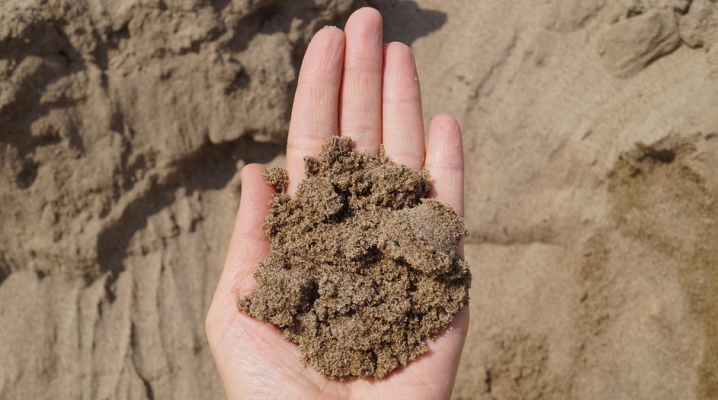
Sand is a rock formed due to the breakdown of solid minerals. The fine particles that make up the material can have different sizes in the range from 0.05 to 2 mm. Scientists distinguish 2 types of sand - natural and artificial. This classification is based on the source of origin of the material.
The category of natural sand includes such a variety as river mineral. The particles of which it consists are rounded, which affects the distinctive properties and characteristics of this material. In addition, the river variety is distinguished by the absence of clay impurities. Today in our article we will talk about the features, methods of extraction, existing types, as well as the rules for buying and storing material.
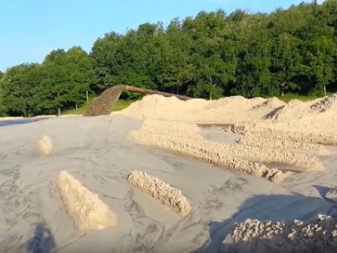

Composition and properties
To begin with, it should be said that from a chemical point of view, river sand is crystalline silicon dioxide, its formula is SiO2. Traditionally, the mineral is composed of quartz. Externally, river material looks different, it can be painted in different shades of the color palette (most often - yellow, white, gray). This characteristic depends on where it was mined. A detailed description of the appearance can be obtained by looking at the mineral under a microscope.
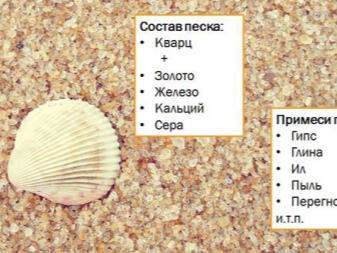

Distinctive features of the material:
- ecological cleanliness;
- resistance to negative influences from various aggressive substances;
- moisture resistance;
- soundproofing properties;
- resistance to decay processes.
The most important characteristics of the material can also include such an indicator as specific gravity (which consists of bulk and true density). It usually ranges from 1200 kg / m3 to 1700 kilograms cubed. The melting point of the material depends on the content.
This information is presented in the corresponding GOST in the form of a table.
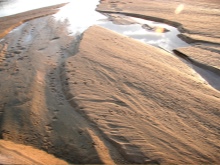
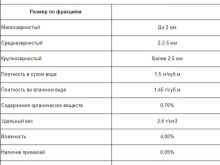

Mining
As you might guess from the name of a particular type of material, it is mined from rivers. The specific mining method depends on how deep the river is.
For example, it is possible to take river sand from a deep river only by means of a special device - a dredger. Usually this mechanism is mounted on a specially designed barge. The design of the dredger traditionally includes complex hydromechanical equipment, which consists of pumps, tanks and sieves designed to separate sand (however, the mineral can be separated by other methods as well).
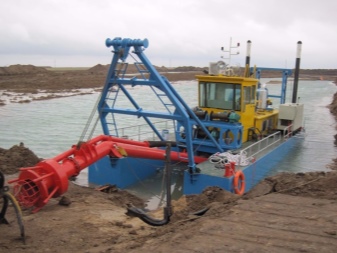
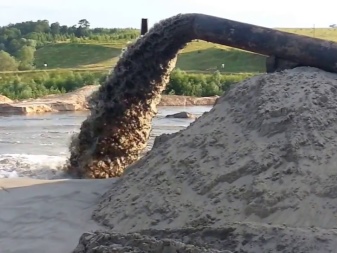
The sand extraction procedure itself takes place in stages.
- To begin with, rippers are lowered to the bottom of the river. These devices will suck in sand due to their mechanical work.
- Further, along a slurry pipeline specially designed for this purpose, the sand will gradually rise to the surface of the barge. Here, the sand is piled onto a hydraulic dump, which, in fact, is a normal platform for material. Usually the dump is equipped with a drainage system.
- The next step is dry sand cleaning. The cleaned material is then transferred to a separate barge.
It should be noted that the extraction of river squeak from the channels of dried up reservoirs is organized according to the same method as the extraction of a quarry mineral.
Do not forget that in order to be able to use sand in the future, you must obtain the appropriate official documentation for it.


Comparison with other species
As mentioned earlier, river sand is a type of natural material. At the same time, it has significant differences in relation to other types of natural sand, in particular sea and quarry. First of all, a significant difference between a river mineral and any other is that it has a high level of purity, the absence of unwanted impurities, for example, small stones. Also, the river mineral differs from the quarry and marine in its homogeneity (relative to fractions).
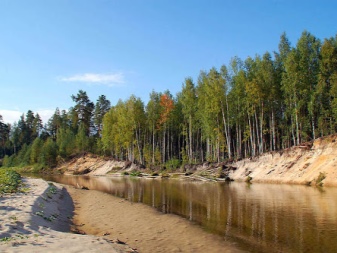

River and sea
To begin with, it should be noted that river and sea sand have a lot of similar characteristics. That's why these varieties are often confused with each other (especially beginners).
However, it should be borne in mind that in order to achieve this state, the sea sand is subjected to a two-stage cleaning.

River and quarry
River and quarry sand is used in different areas of human activity, these varieties are not interchangeable. An important difference between the two types of sand is that the quarry variety has a large amount of impurities (most often organic).
Thus, river sand is a kind of natural material that has a number of individual characteristics that cannot be confused with anything else.
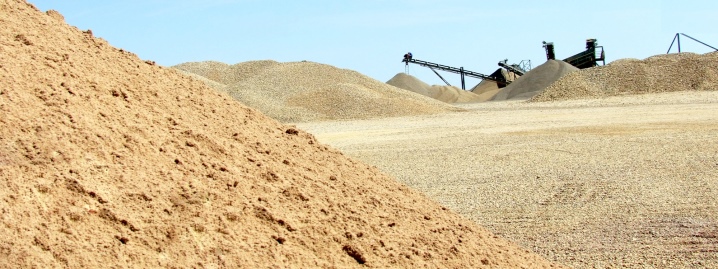
What happens?
Today, there are several different types of river sand - quartz, coarse-grained, fine, washed and others. Let's consider some of the varieties in more detail.
Washed
Washed sand is a natural material that has a smooth texture. As a rule, particles of this material are colored gray or yellow. The chemical composition of the mineral includes components such as silicon and iron oxides.
The sand contains no large and small particles, usually sand grains are characterized by an average size.
This variety got its name due to the fact that it is washed in the water of the river in a natural way, during which all unwanted impurities are eliminated.
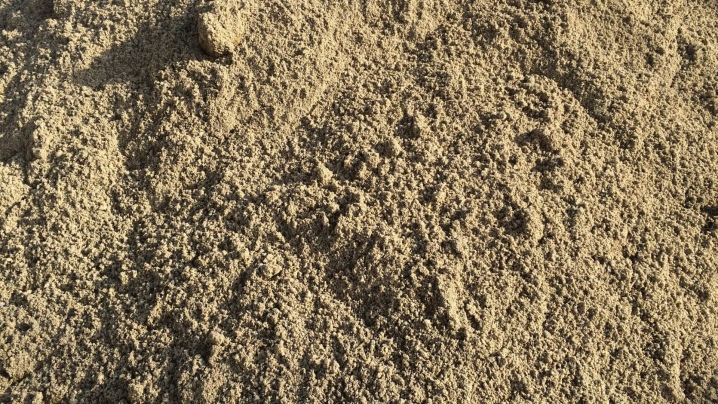
Coarse-grained
As the name suggests, this sand is characterized by large fractions. Coarse sand is valued more than other types of material, therefore, it is characterized by a high cost. Traditionally, this sand is obtained from dry river beds. It finds wide application in various spheres of human activity. The color of this mineral is quite neutral.
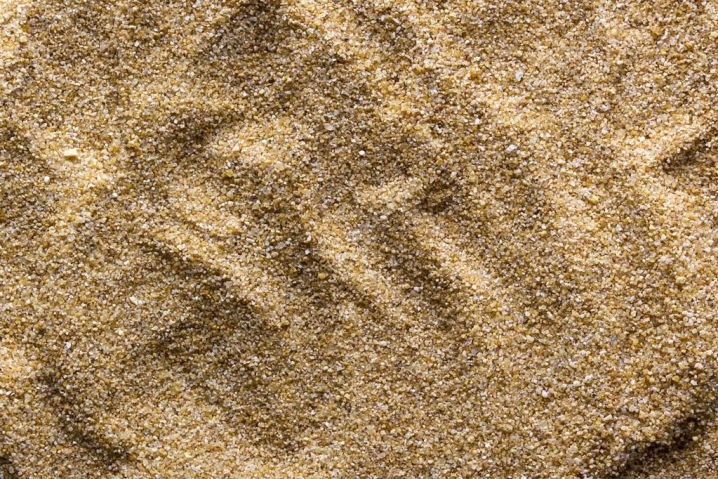
Although The 2 varieties described above are the main ones, there are other types of river material. So, for example, there are also types such as dusty, medium-grained and clayey. The first 2 types differ in the size of the particles that are part of the sand, and the last category is characterized by the presence of unwanted impurities.
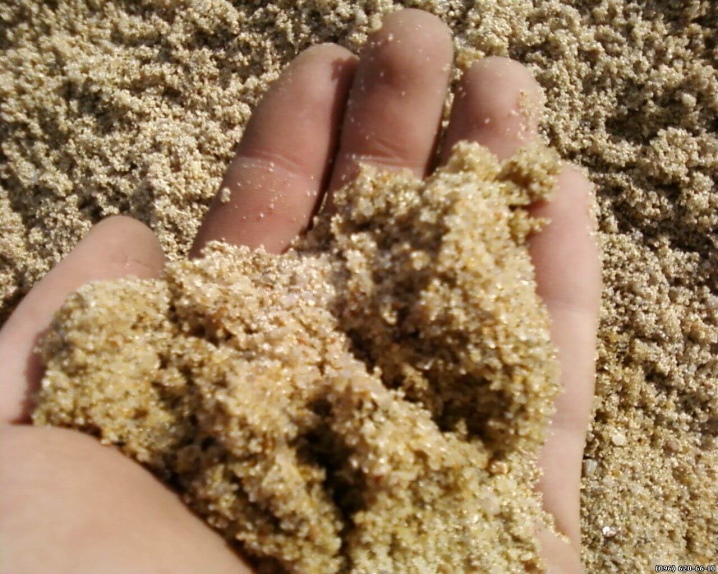
Applications
River sand is used in a wide variety of applications. Below are the main ones:
- production of various concrete products (in this case, sand increases indicators such as reliability and resistance to low temperatures);
- production of dry mixes (for example, for a vegetable garden or a sandbox);
- creation of foundation cushions (in the construction industry);
- making a solution for plastering and masonry tasks;
- implementation of screed and masonry;
- decoration and decoration of the interior (both internal and external);
- landscaping and landscaping;
- production of fertilizers for plants;
- purification of water in the aquarium;
- device and organization of playgrounds.



It should be borne in mind that, depending on the specific area, it is better to choose one or another type of river sand, which will be as relevant as possible in each specific case.
At the same time, it should be borne in mind that this list is not final. Sand can be used in many other areas of human activity as well. First of all, you can apply creativity and creativity in the event that you use material for decoration and decoration.
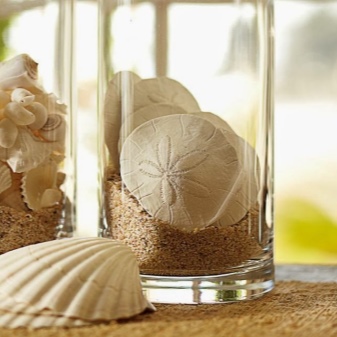

What factors to consider when buying?
In the process of acquiring a river mineral, you should be as careful as possible. It must be remembered that the quality of the raw material has a great influence on the final result of your work (regardless of the purpose for which the material is used).
First, you must make sure there are no impurities. Remember that cleanliness is the most important property of a material. Therefore, it is not recommended to purchase natural material if it contains elements such as clay or stones. In the event that there are no impurities in the sand, then it will be homogeneous, with high flow properties. Accordingly, when buying, you should pay attention to these qualities.
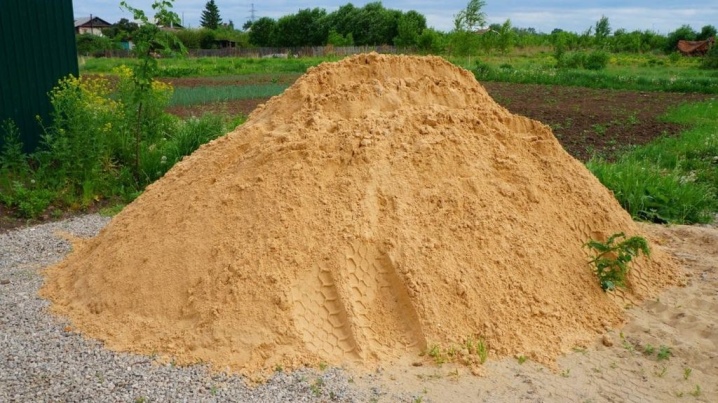
You should be especially careful if you purchase sand by weight. The thing is that the mass index largely depends on the moisture content of the sand. Accordingly, even if you bought a sufficient amount of sand by weight, the material may not be sufficient in volume. When calculating the amount of sand required to perform certain jobs, use units such as cubic meters. Thus, you can make the most accurate calculations, which will make your work easier and have a positive effect on the final result.
Before you go shopping for sand, think about how to transport it. The point is that in some cases you may need special permission. Before direct purchase, ask the seller to show you quality certificates (or any other documents) that indicate the quality of the sand. Feel free to study them carefully, and, if possible, ask additional questions to the seller.
Thus, taking into account all the above factors and parameters, you can choose and purchase high-quality natural material that will fully fulfill its functions.
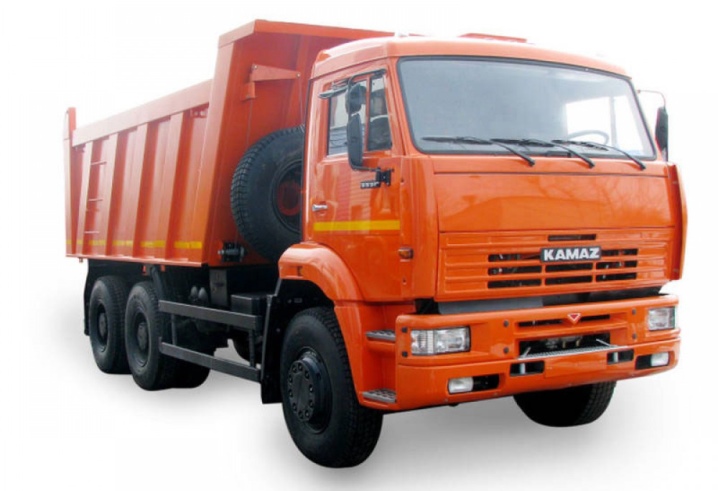
Storage
After you have purchased the sand, but before you start using it, it is important to store it properly. The storage procedure can be carried out outdoors, in storage areas, under a canopy or under a covering material. The sand itself can be stored in bulk, in stacks, or laid out in a frusto-conical shape.
The storage process must take at least 72 hours. This is due to the fact that it is during this period of time that the sand will settle, respectively, you will be able to make the final calculation of the material. In addition, if the sand was wet, then within the specified time it will have time to dry out.
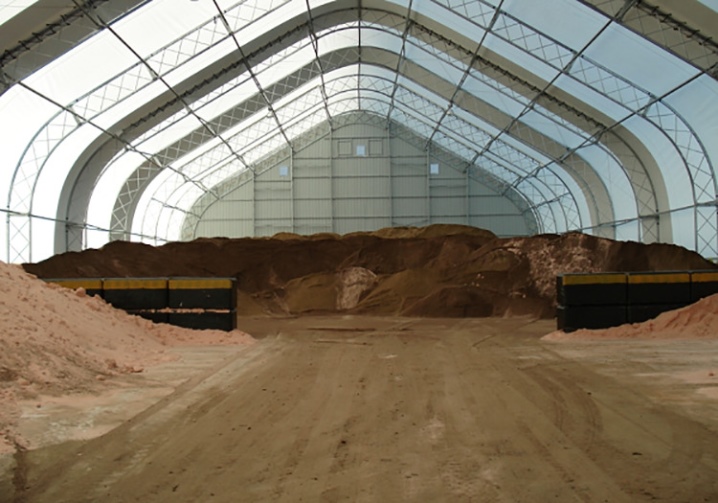
Thus, Based on the above, we can conclude that river sand is an important and necessary material. It is used in various fields of activity. It is very important to carefully and responsibly approach the choice of a mineral - in this case, first of all, it is recommended to take into account your individual needs and needs.
However, in addition to the choice of sand, you should be careful about its storage. Only if all the rules are followed will your material retain its high quality.
See how the extraction of river sand takes place in the next video.













The comment was sent successfully.